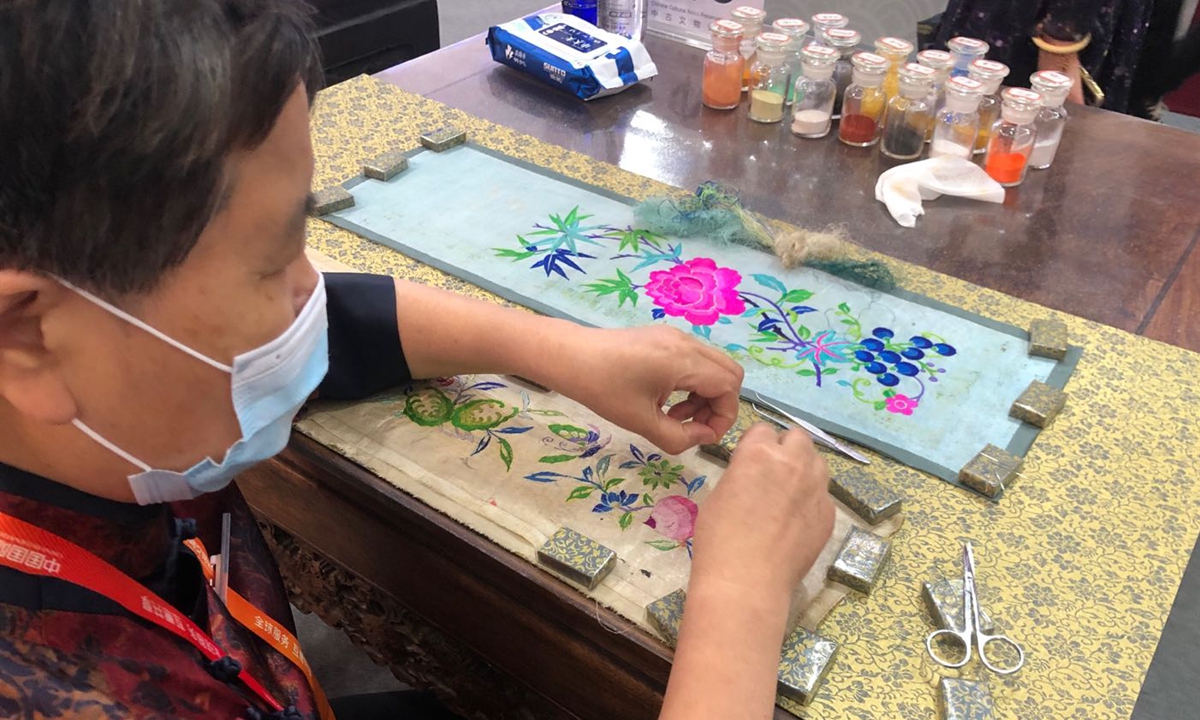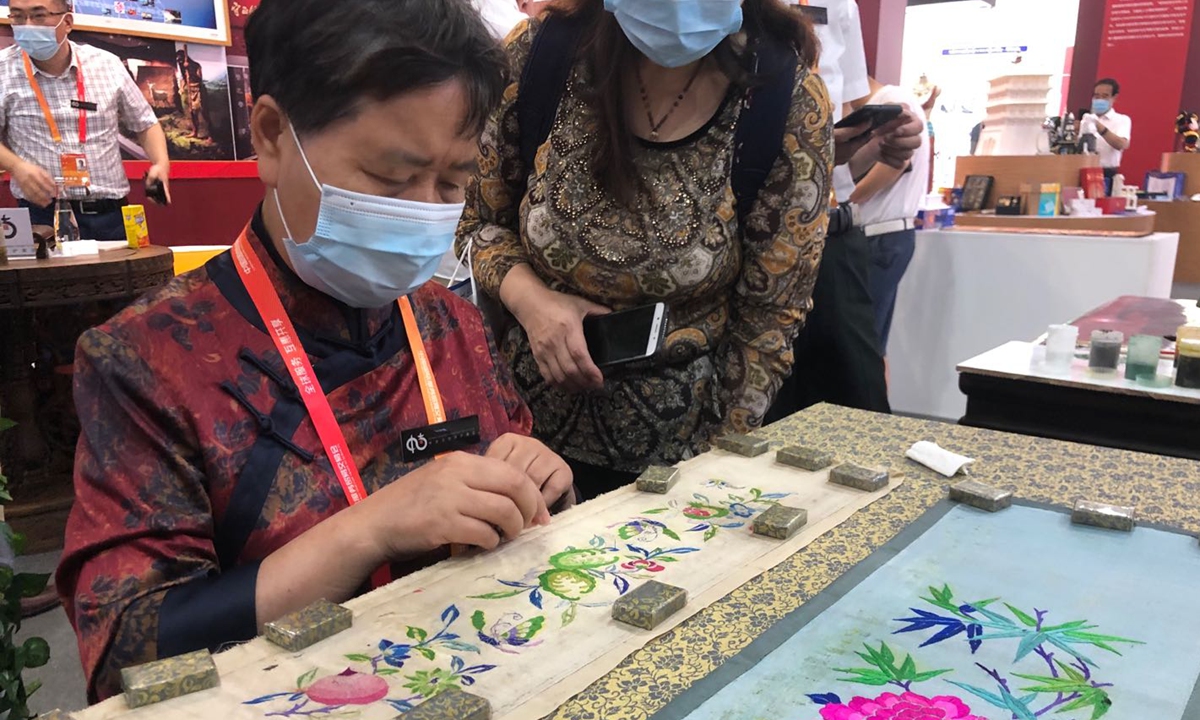China's cultural relics restoration market promising, but faces bottleneck
By Liu Caiyu Source: Global Times Published: 2020/9/8 0:35:52

Huang Lijun, a retired cultural relics repairer at the China National Silk Museum, repairs a piece of colored silk cloth at the China International Fair for Trade in Services (CIFTIS) in Beijing on Monday.
Several cultural relics restoration experts sat at four wooden tables focusing on the restoration work at hand, demonstrating how to do the mysterious job of restoring a cultural relic at the China International Fair for Trade in Services (CIFTIS) in Beijing on Monday.
Various types of cultural relics such as bronzes, porcelain, textiles, paintings and calligraphy were in the exhibition area, attracting many to stop and ask what kind of manual work the experts were doing.
Restoration of Chinese cultural relics is of great importance for the continuation of Chinese civilization given the country's long history, and items from different eras have distinct cultural values, Zheng Yanpeng, the general manager of Beijing Leshi Cultural Relics Restoration Center, told the Global Times on Monday.
As one of the exhibitors at CIFTIS, Zheng said, his teams aim to carry forward Chinese culture by restoring broken Chinese cultural relics or relics that had been lost due to wars or being stolen or sold.

Huang Lijun, a retired cultural relics repairer at the China National Silk Museum, repairs a piece of colored silk cloth at the China International Fair for Trade in Services (CIFTIS) in Beijing on Monday.
China has been lagging behind Western countries including France and Italy in cultural relic restoration but China has been developing the area in recent years by investing in professional experts and facilities, Zheng said, noting that "the spring for China's cultural relic restoration is coming."
However, Qian Qian, head of the Chinese Cultural Relics Preservation Group, told the Global Times at the exhibition center that even though cultural relic restoration is a promising industry in China, there is a bottleneck hindering its development because there is a lack of professional repairers.
China only has about 2,000 repairers but there are millions of cultural relics in China that are waiting to be repaired, Qian said, adding that orders for the next five years have already been booked. "Attending the fair is not intended to get more orders but to attract people to get to know the importance of the industry for cultural inheritance."
Huang Lijun, a retired cultural relics repairer at the China National Silk Museum, has been travelling around museums in Chinese cities to repair textile cultural relics in recent years. Huang was trying to repair a piece of colored silk cloth at CIFTIS.
Huang told the Global Times the piece of silk requires months of work before completion, from dyeing, making up broken parts and mounting it.
Only when a person has been trained for five to ten years can they handle real cultural relic restoration, Qian said.
Chinese experts have been participating in restoration projects in Cambodia, Nepal and Mongolia, contributing to China's efforts to help with the world's cultural relic restoration.
According to Zheng, the Leshi Cultural Relics Restoration Center has also seen many overseas collectors bringing Chinese cultural relics and artworks back to China for restoration. Repairing cultural relics not only involves museums but also individual collectors, he said.
Posted in: SOCIETY